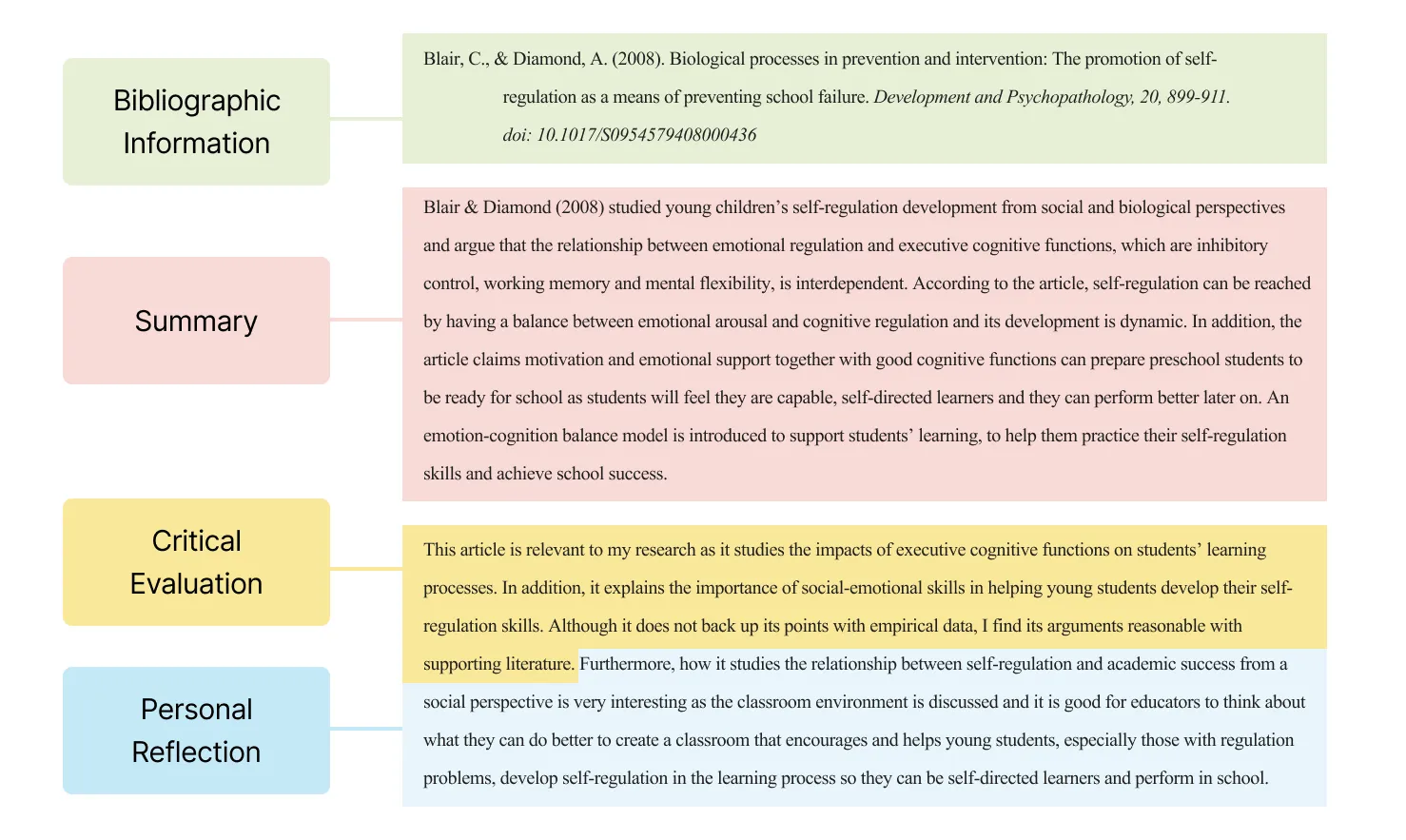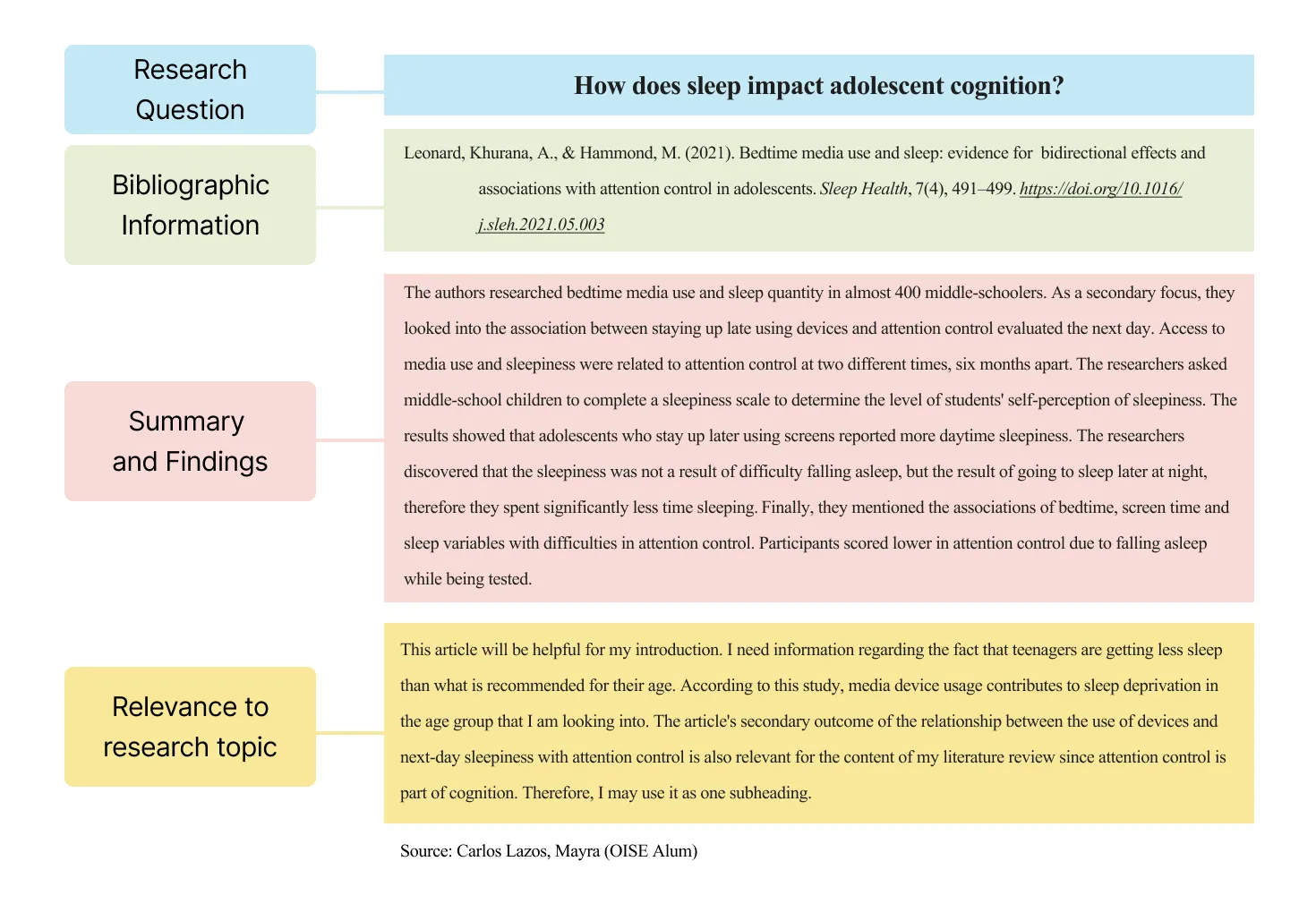What is an Annotated Bibliography?
This Resource Page will help you:
- Learn what an annotated bibliography is.
- Understand the importance of writing an annotated bibliography and its practical applications.
- Identify the components of an annotated bibliography.
What is an Annotated Bibliography?
An annotated bibliography is an alphabetical list of research sources that includes two components for each selected source:
- bibliographic information about the source (which in most cases at OISE will be in APA format)
- an annotation, which is a summary, assessment, and/or reflection of how the source you selected is significant to your field, assignment, or research project.
For the purposes of class assignments, your instructor will provide you with details that can help determine how much information to include in your annotations. Learn more about how to understand your assignment check our resource page on understanding assignment instructions and planning.
An annotated bibliography can be a standalone assignment or a foundational tool to help develop a larger research project or assignment. Sources used might include primary sources (e.g., poetry, novels, life writings), secondary sources (e.g., scholarly articles, books, book chapters), or both.
What are the Components of an Annotated Bibliography?
An annotated bibliography typically includes the following sections:
Here you provide an overview of :
- your research or assignment topic
- your research question(s)
- the criteria and key terms used to guide your source collection.
The requirements of what you include in your introduction will also be guided by your assignment instructions.
The sources you collect are presented alphabetically in the reference list citation format of your field (to learn more about APA format, see Citations and APA Style).
Depending on the length and depth of your annotated bibliography, your sources can also be organized within identified subthemes. For instance, if your topic is about the expansion of higher education within Canada, a subtheme that you found may be “admission practices”.
Below the bibliographic information of each source is the annotation, i.e., a paragraph or a few paragraphs about the source content. Annotations may include the following information:
- A summary of the text (e.g., content, scope, main points, intended audience, research methodology, findings)
- Identified strengths and limitations
- Author(s)’s conclusions
- Your reflections on the relevance or usefulness of the text for your purposes
- Other reflections that may be of relevance to you or as outlined in your assignment instructions
See two examples of bibliographic information and annotations below.
Example 1

Example 2

These examples are also available as a PDF:
These are two examples of annotated bibliographies with slightly different structures.
Why Write an Annotated Bibliography?
To explore your topic of interest: By reading multiple sources you will be able to get a sense of emerging themes, topics, and terms surrounding your topic of interest.
To practice your comprehension & synthesis skills: Writing effective annotations requires you to understand your source, identify the main points, and summarize your source in a way that allows new readers to understand the source broadly.
To practice your analytical & critical thinking skills: Your annotated bibliography assignment might require critical evaluation of each source in relation to how it fits with your research interest or assignment. This will require you to (1) assess the relevance of the source for your topic/question; (2) assess the quality of its arguments, findings, and methods; (3) assess how its argument(s) fit with your own understanding; and (4) express how this source helps deepen your understanding of your topic and/or how you plan on using said source in your paper/research project.
To lay your research foundations: As you know, an annotated bibliography provides specific information about each source you have collected. A complete and well-written annotated bibliography can therefore serve as a foundation for your classes, larger assignments (e.g., final paper) or as you pursue other projects within the area.
Now that you know what an annotated bibliography is, the next step is to learn how to write one.
